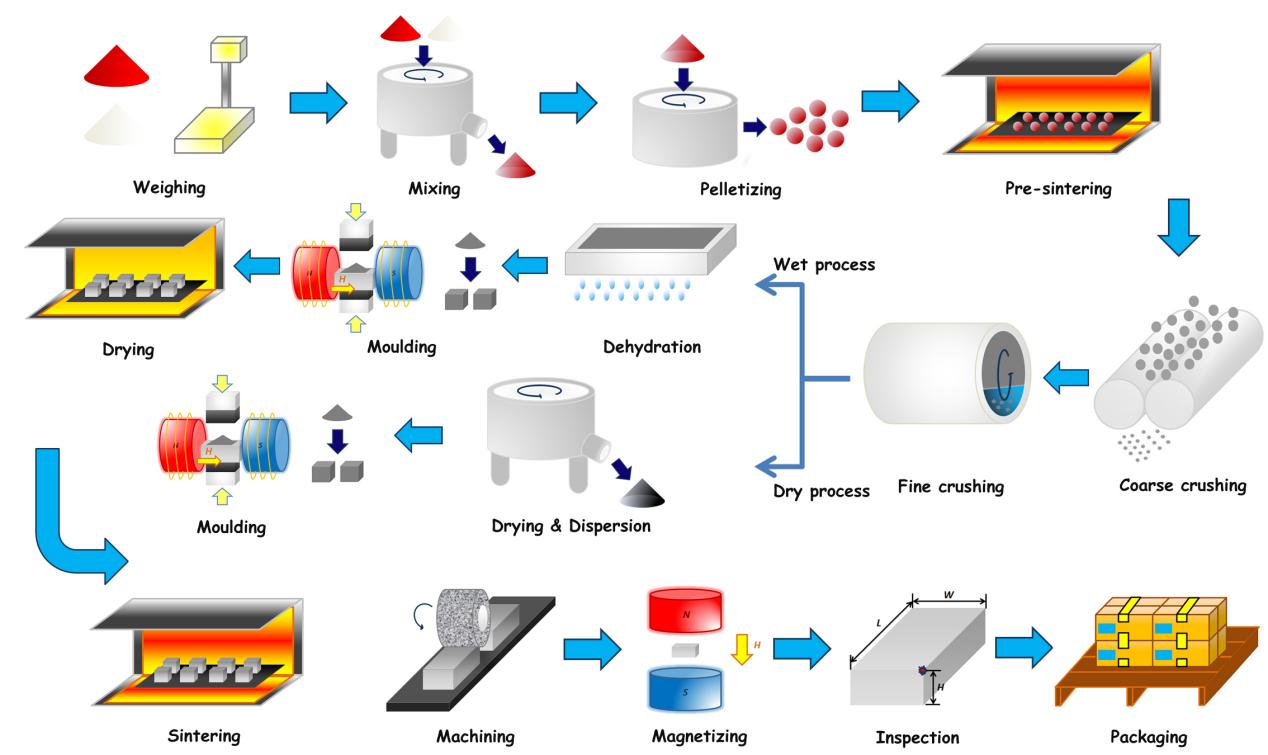Ferrite magnet has many applications in our life. Ferrite magnet is a permanent magnet mainly made of SrO or BaO and Fe2O3 as raw materials.
Ferrite magnets are hard and brittle and have lower magnetic energy than other permanent magnets. But it is not easy to demagnetization corrosion, simple production process and low price, therefore, in the whole magnet industry ferrite magnet output is the highest and is widely used in industrial production.
So how is ferrite magnet produced?
1. Weigh and mix.
Ferrite raw materials include main raw materials, additives and flux.
Fe2O3, BaCO3, SrCO3 and CaCO3 are the main raw materials of ferrite magnet.
The weighing process must strictly follow the formula, otherwise the ideal magnetic properties cannot be obtained.
The raw materials are weighed and mixed in special equipment.
Composition uniformity is based on the mixing process.
There are many factors that affect the uniformity of composition of mixtures.
2. Granulation
In order to ensure the smooth solid phase reaction process, it is necessary to granulate the mixture before pre-firing. During the granulation process, the solution will be sprayed into the mixture. The particle size of pellet material has an effect on the pre-firing time.
3. Pre-sintering
The purpose of pre-sintering is to fully ensure the solid phase reaction of raw materials, after pre-sintering, most of the raw materials will be transformed into ferrite phase, and the pre-sintering process will improve the deformation, shrinkage and density.
The pre-sintered powder can be used as a raw material for sintered magnets, bonding magnets and absorbing materials. Now most ferrite manufacturers directly purchase the pre-sintered powder.
4. Ball mill
In this step, the pre-sintered material is crushed into a fine powder.
The crushing process will be completed by the ball mill equipment grinding media of steel balls and water.
5. Molding
On the basis of traditional classification methods ferrite magnets are divided into isotropic and anisotropic types.
Ferrite forming methods are also divided into wet and dry two.
High technology intensity of molding process.
6. Sintering
Like other types of sintered magnets, sintering steps are also very important for ferrite magnets. First, the sintering process will affect the microstructure of ferrite, and then affect the magnetic properties of ferrite. Unreasonable sintering parameters will lead to cracks, bubbles and deformation of the magnet.
7. Mechanical processing
Ferrite magnets are processed by grinding, polishing, cutting and punching. Because ferrite is an insulating material, magnet manufacturers will use grinding wheels in the cutting step.
